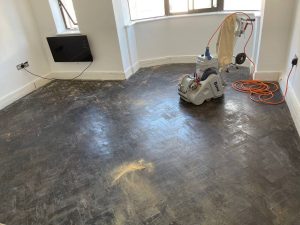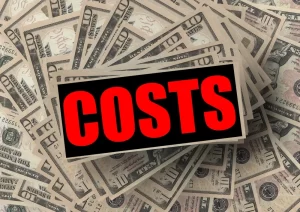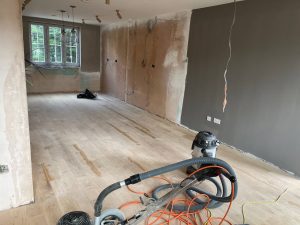Understanding Grit Sequences in Floor Sanding

Achieving the Perfect Finish for Your London Home
Introduction
Sanding wooden floors is a meticulous process that involves using different grit sandpapers to achieve a smooth and flawless finish. Understanding the correct grit sequences is essential for anyone looking to restore or refinish their wooden floors. In this post, we’ll explore the importance of grit sequences in floor sanding and how to use them effectively in your London home.
What Are Grit Sequences?
Grit sequences refer to the progression of sandpaper grits used during the sanding process. Sandpaper grit is measured by the number of abrasive particles per inch; the lower the number, the coarser the grit. Each grit level serves a specific purpose, starting with coarse grits to remove old finishes and imperfections, and moving to finer grits to smooth the wood and prepare it for finishing.
The Importance of Proper Grit Sequences
Using the correct grit sequence is crucial for several reasons:
- Efficient Finish Removal: Coarse grits efficiently remove old finishes, paint, and deep scratches, making the initial sanding quicker and more effective.
- Smooth Surface Preparation: Progressing through finer grits ensures that the wood surface becomes progressively smoother, readying it for staining or finishing.
- Minimising Damage: Jumping to a fine grit too quickly can leave deep scratches or uneven surfaces, compromising the final finish.
- Achieving Professional Results: Following a proper grit sequence results in a professional, high-quality finish that enhances the beauty of your wooden floors.
Common Grit Sequences for Floor Sanding
Here is a typical grit sequence used in floor sanding:
- 36-Grit: Start with a 36-grit sandpaper to remove old finishes and major imperfections. This coarse grit quickly cuts through the surface, preparing it for finer sanding.
- 60-Grit: Move to a 60-grit sandpaper to smooth out the scratches left by the 36-grit. This step begins to refine the surface, making it smoother.
- 80-Grit: Use an 80-grit sandpaper to further refine the wood surface. This medium grit helps eliminate the scratches from the 60-grit and prepares the wood for the finer grits.
- 100-Grit: A 100-grit sandpaper can be used to smooth the surface even more, ensuring that it’s ready for staining or finishing.
- 120-Grit: Finish with a 120-grit sandpaper to achieve a perfectly smooth surface, ideal for applying stains, varnishes, or other finishes.
Tips for Effective Sanding
To ensure the best results, follow these tips:
- Test in a Small Area: Before starting, test your sanding sequence in a small, inconspicuous area to ensure it meets your expectations.
- Keep the Sander Moving: Avoid leaving the sander in one spot for too long to prevent uneven sanding and gouges.
- Vacuum Between Grits: Vacuum the floor thoroughly between each grit to remove dust and debris, ensuring a clean surface for the next sanding stage.
- Inspect Regularly: Regularly inspect the floor for any missed spots or imperfections and address them before moving to the next grit.
- Use the Right Equipment: Ensure you are using the appropriate sanding equipment for your floor type and project size.







How to Protect Your Furniture During Floor Sanding
How to Protect Your Furniture During Floor Sanding Expert Tips to Keep Your Belongings[Read more...]
The History and Evolution of Floor Sanding Techniques
Floor sanding is a crucial process in maintaining the beauty and longevity of wooden floors.[Read more...]
How to Identify and Repair Water Damage Before Sanding
How to Identify and Repair Water Damage Before Sanding Ensure your London home’s floors[Read more...]
Wood floor nailing
[Read more...]
The Future of Floor Sanding: Emerging Trends and Technologies
The Future of Floor Sanding: Emerging Trends and Technologies Discover How Advancements Are Shaping[Read more...]
The Pros and Cons of Matte vs. Gloss Finishes
The Pros and Cons of Matte vs. Gloss Finishes Choosing the right finish for[Read more...]
The Lifespan of Sanded Floors: What to Expect
Sanded floors can significantly enhance the beauty and value of your home, especially in a[Read more...]
How to Deal with Pet Damage on Wooden Floors
How to Deal with Pet Damage on Wooden Floors Effective solutions for maintaining beautiful[Read more...]
Cost Guide: How Much Does Floor Sanding in London Cost?
If you’re looking to rejuvenate your wooden floors and enhance the beauty of your home,[Read more...]
The Best Floor Sanding Practices for Winter
The Best Floor Sanding Practices for Winter Winter can present unique challenges for maintaining[Read more...]